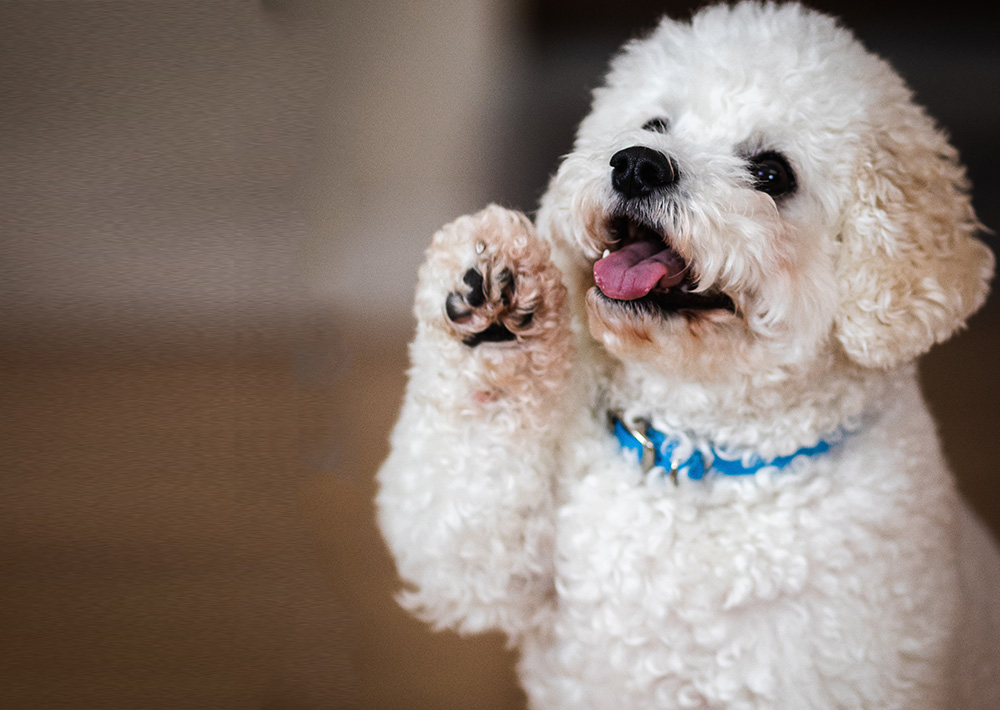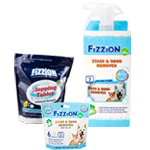Tips to Protect Your Pet’s Paws this Summer

- August 21, 2020
- Fizzion Clean
Summer can be extremely harsh on your pet, especially their paws. As the temperature rises outside, sidewalks, roadways, and even sand can get extremely hot and cause burns and damage your dog’s paws. It’s not uncommon for asphalt, sand, wood, and concrete to be about 50 degrees warmer than the outside temperature. For example, if its 85 degrees outside, an asphalt driveway can reach temperatures as high as 140-141. Imagine how your feet feel when walking barefoot on the patio or across the driveway, your dog’s paws experience this same degree of heat. Here are a few tips to protect your pet’s paws this summer.
Walk in the Morning or Evening
Concrete sidewalks and asphalt pavement can get extremely hot during the afternoon hours, and prolonged exposure to these surfaces may scorch your pet’s paws. To avoid the risk, the best time for exercise and walks are early morning hours and just before the sun goes down, but it’s still light outside. If you must go out during the afternoon, be sure to walk in the grass.
Be on the Lookout for Debris
Not only can your pet’s paws get injured from scorching asphalt, but during the summer there tends to be an excess of debris on sidewalks and roadways. Be sure to watch for broken glass and other sharp objects that may break the skin on paws. If your pet does injure their paw while on a walk, take them home and clean the wound with antibacterial wash right away. If the injury is less than a half-inch in diameter, wrap it in a bandage, but if it’s deeper, contact your veterinarian for further instructions.
Put Booties on Paws
One of the best investments you can make for your pet is a pair of pet booties. There are booties available in various types of material, even lightweight options, such as cotton. During the summer, lightweight cotton booties will help protect their paws, without causing extra heat. Make sure booties fit well and fully in place before going for a walk; loose booties may cause tripping, so make sure they fit snug.
Dry Paws After Swimming
If your pet loves to swim, it’s an excellent way for them to cool down, but they may be more susceptible to burnt paws after swimming. Be sure to dry their paws immediately after they get out of the water. If you notice your pet is limping, chewing at their paws, has blisters or missing areas of the pad, contact your veterinarian for instructions on how to proceed.
It’s important to examine your pet’s paws after each outing carefully. If you notice anything out of the ordinary, be sure to contact your veterinarian right away. If your pet’s paws get burned, without appropriate treatment, there is a risk of serious complications. If you are comfortable treating the burns at home, apply antibiotic ointment to the affected area and bandage their paws. However, in extreme burns or loss of the pads, you must take them to the vet right away for the appropriate treatment.
Fizzion offers 100% non-toxic pet cleaning and home cleaning products powered by CO2.
Recent Posts
- 10 Apr 5 Household Cleaning Products That Harm Pets
- 21 Aug Tips to Protect Your Pet’s Paws this Summer
- 07 Aug Tips to Keep Your Pet Hydrated
- 26 Jun Why You Shouldn’t Scold Your Pet
- 12 Jun What to Do When Your Dog Won’t Eat
- 22 May How To Care For A Blind Pet
- 08 May Bringing Home An Adopted Cat
- 24 Apr Training with a Clicker
- 27 Mar Pet Poison Prevention Awareness Month
- 13 Mar Pet-Friendly Flooring Options
- 21 Feb Why Your Cat May Be Stressed
- 07 Feb Potty Training 101: How to Get Your Dog to Go in One Spot
- 24 Jan How To Introduce A New Pet To Your Current Pets
- 10 Jan 5 Chew Toys Your Dog Will Love
- 20 Dec Paw-some Holiday Gift Ideas for Your Pet!
- 07 Dec 5 Reasons Never To Give a Puppy or Kitten as a Christmas Gift






